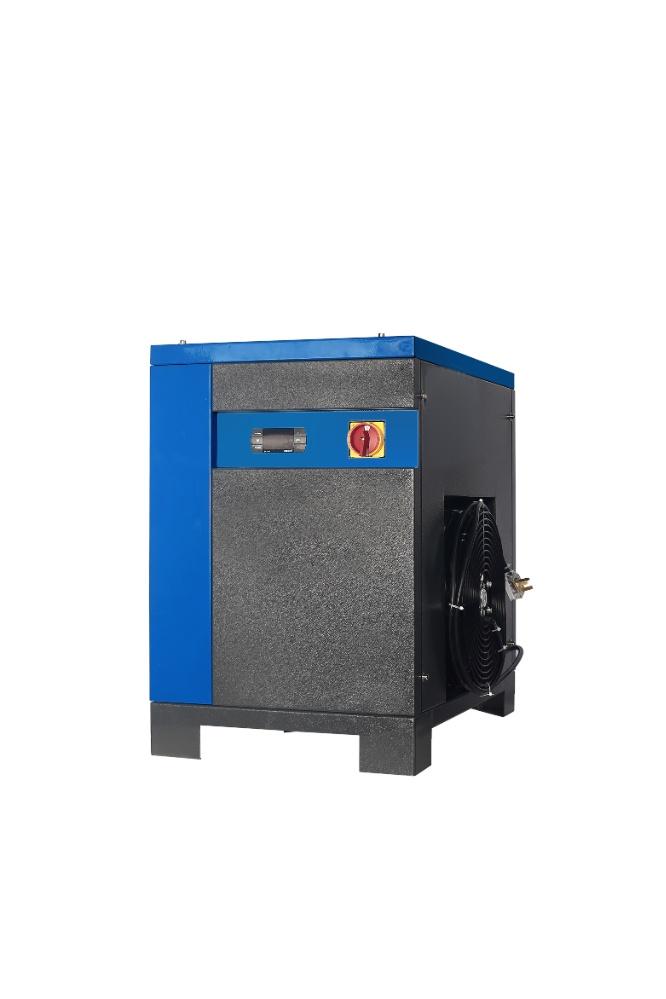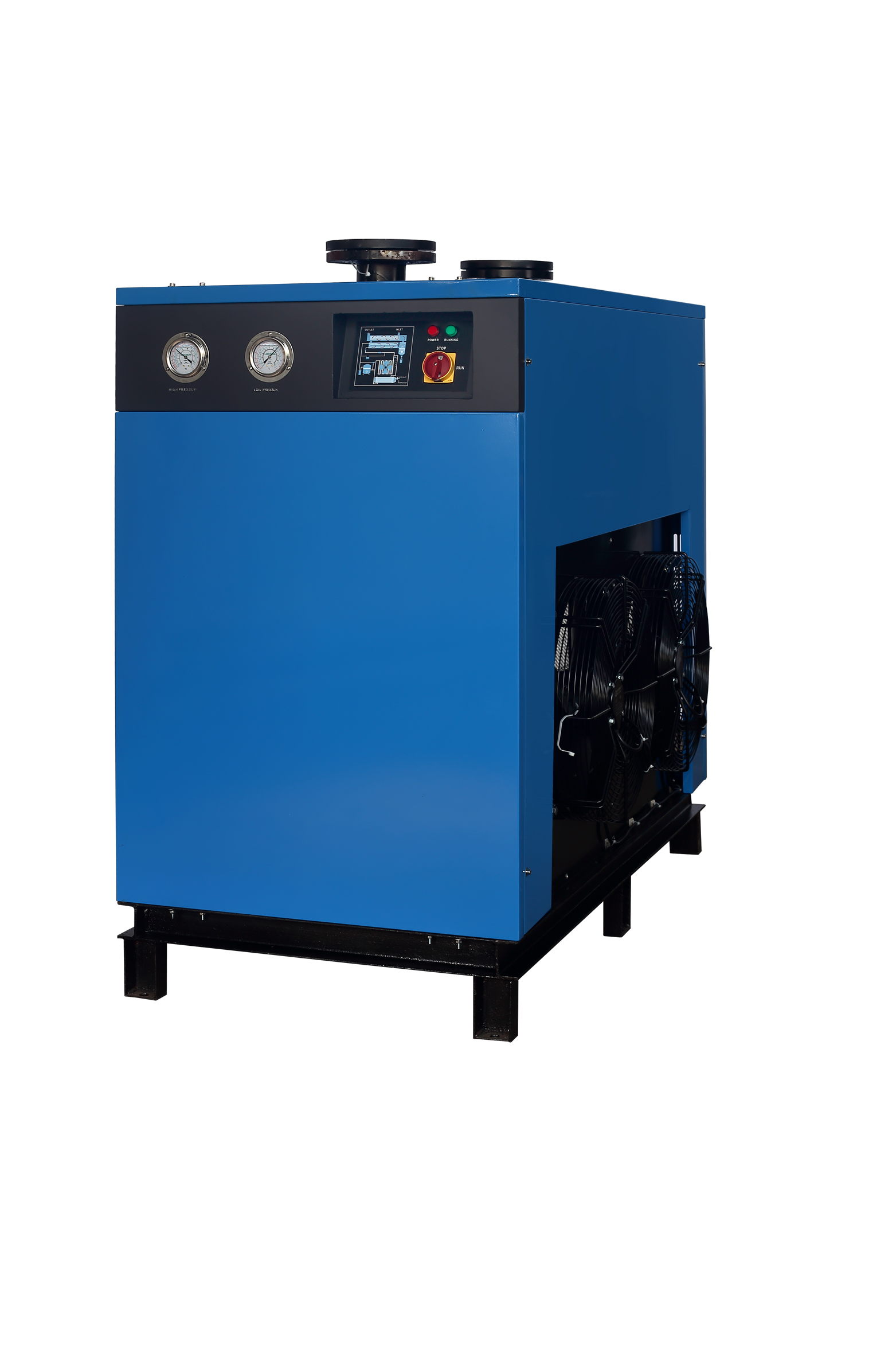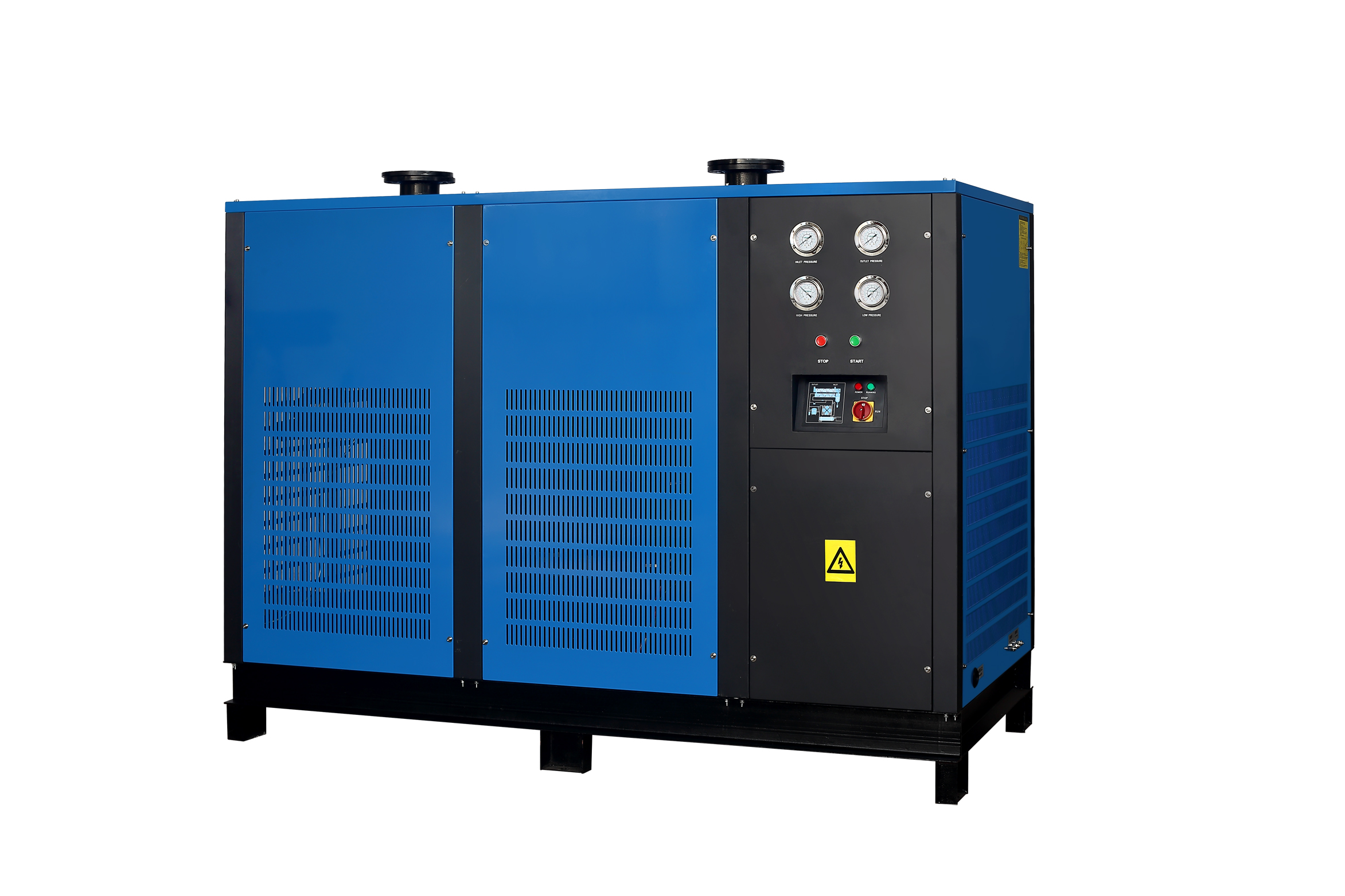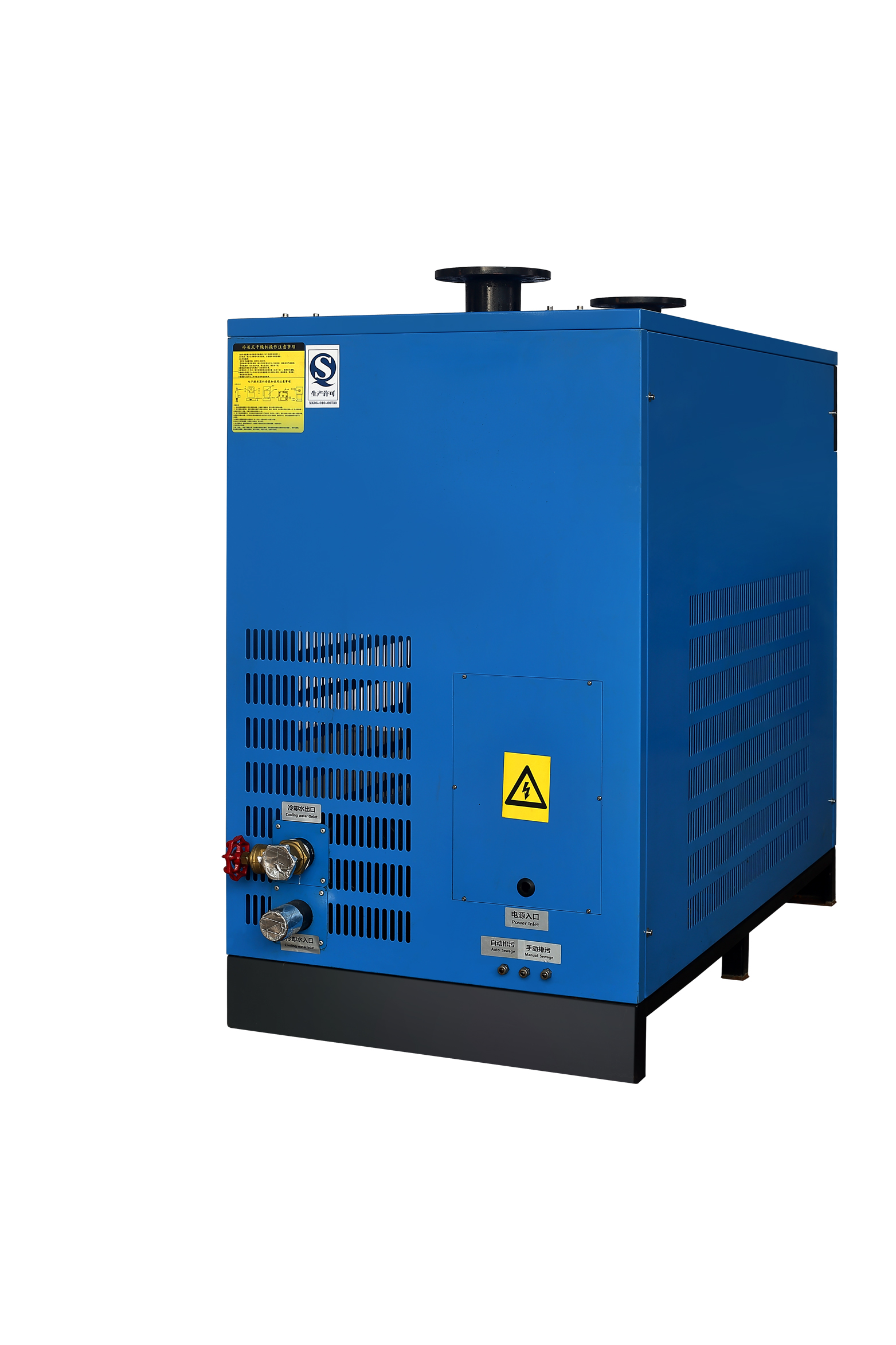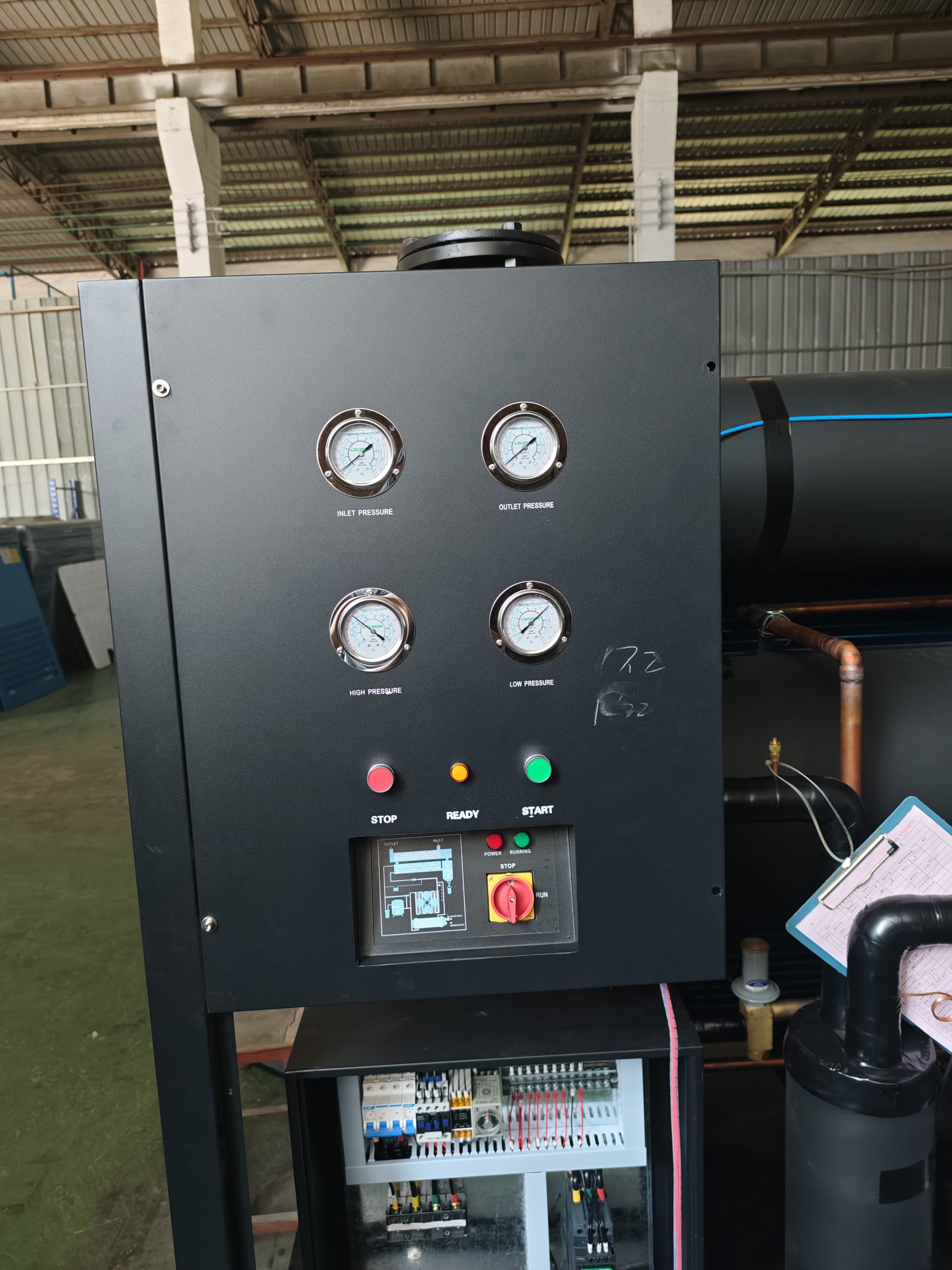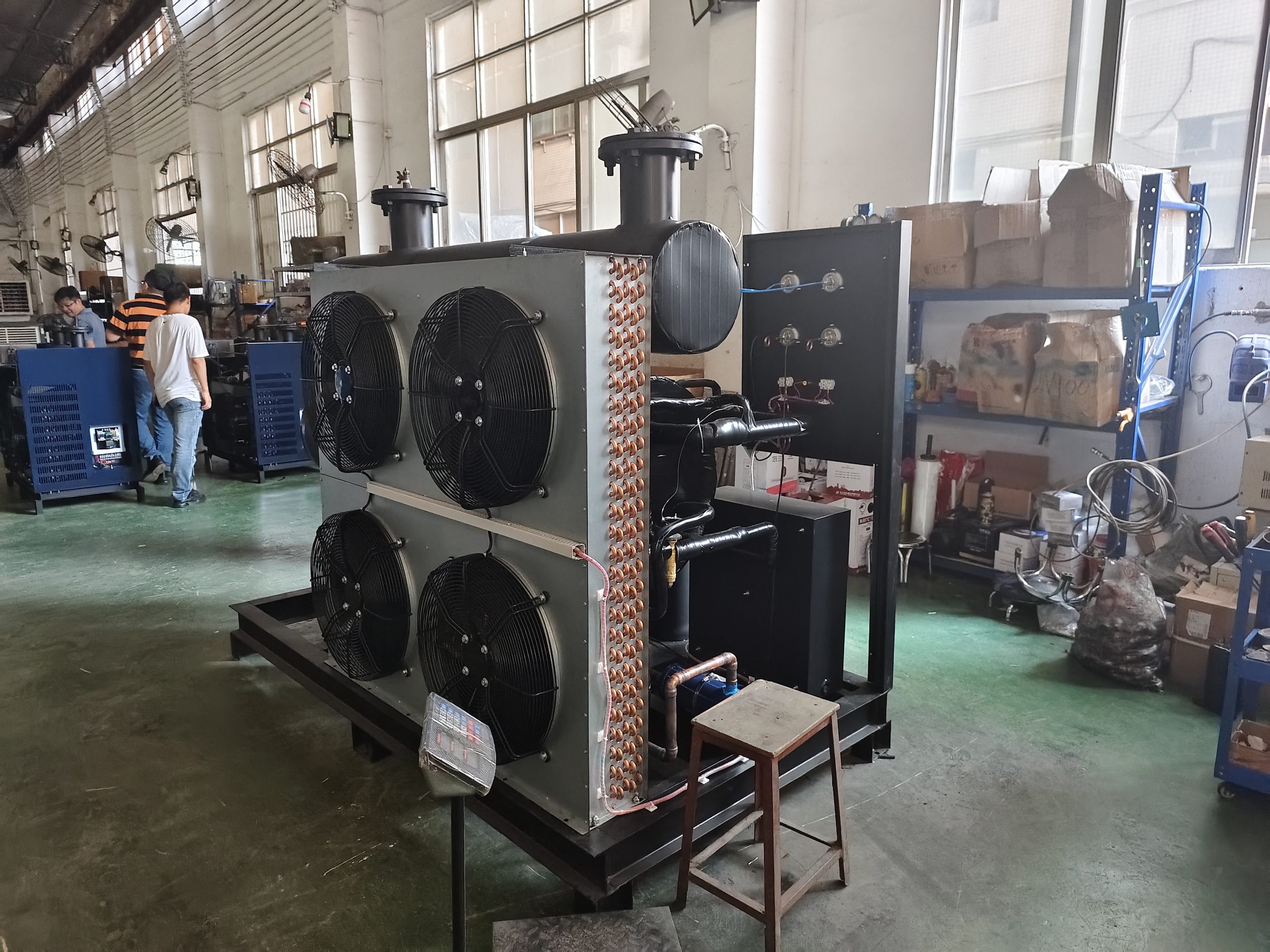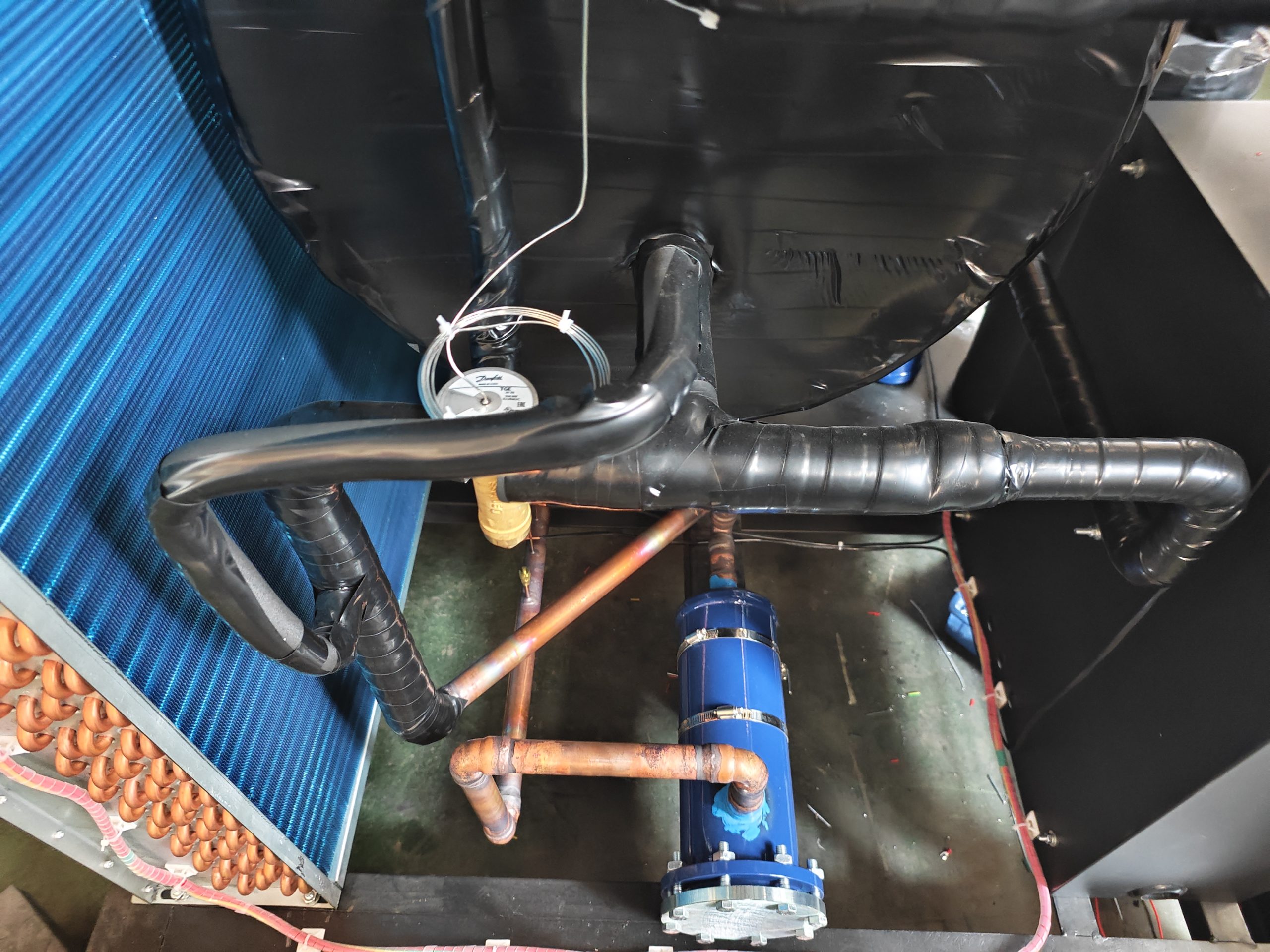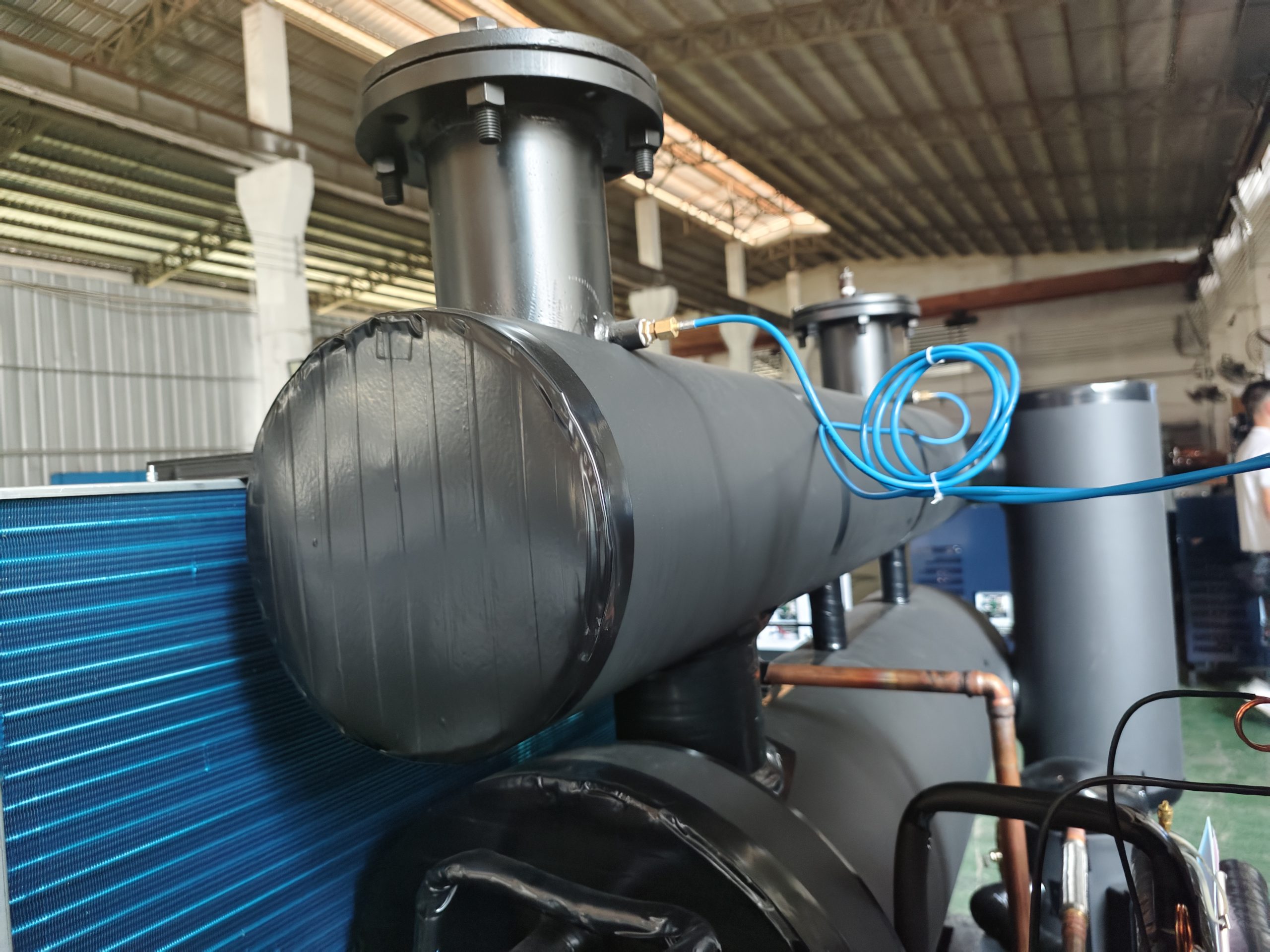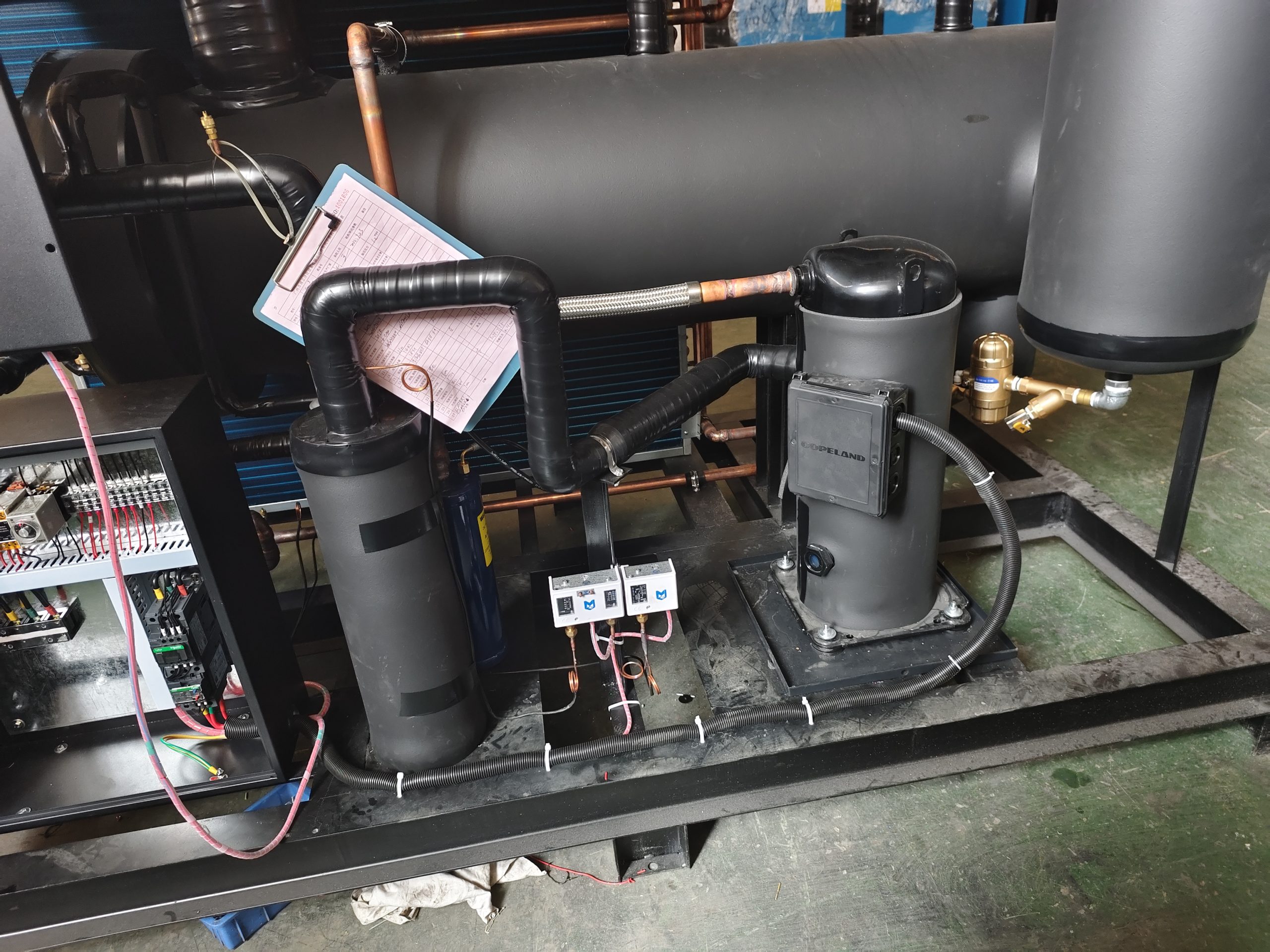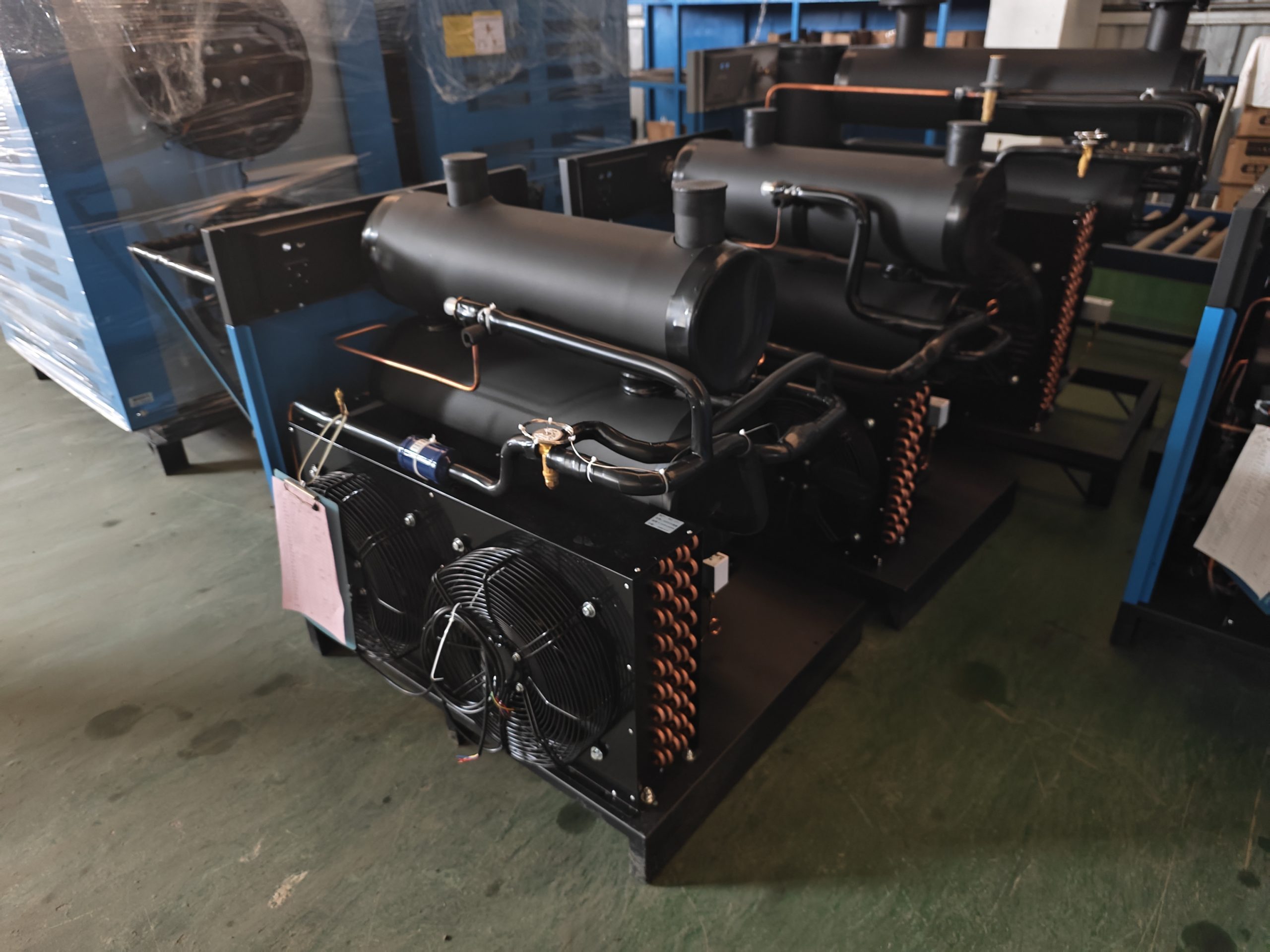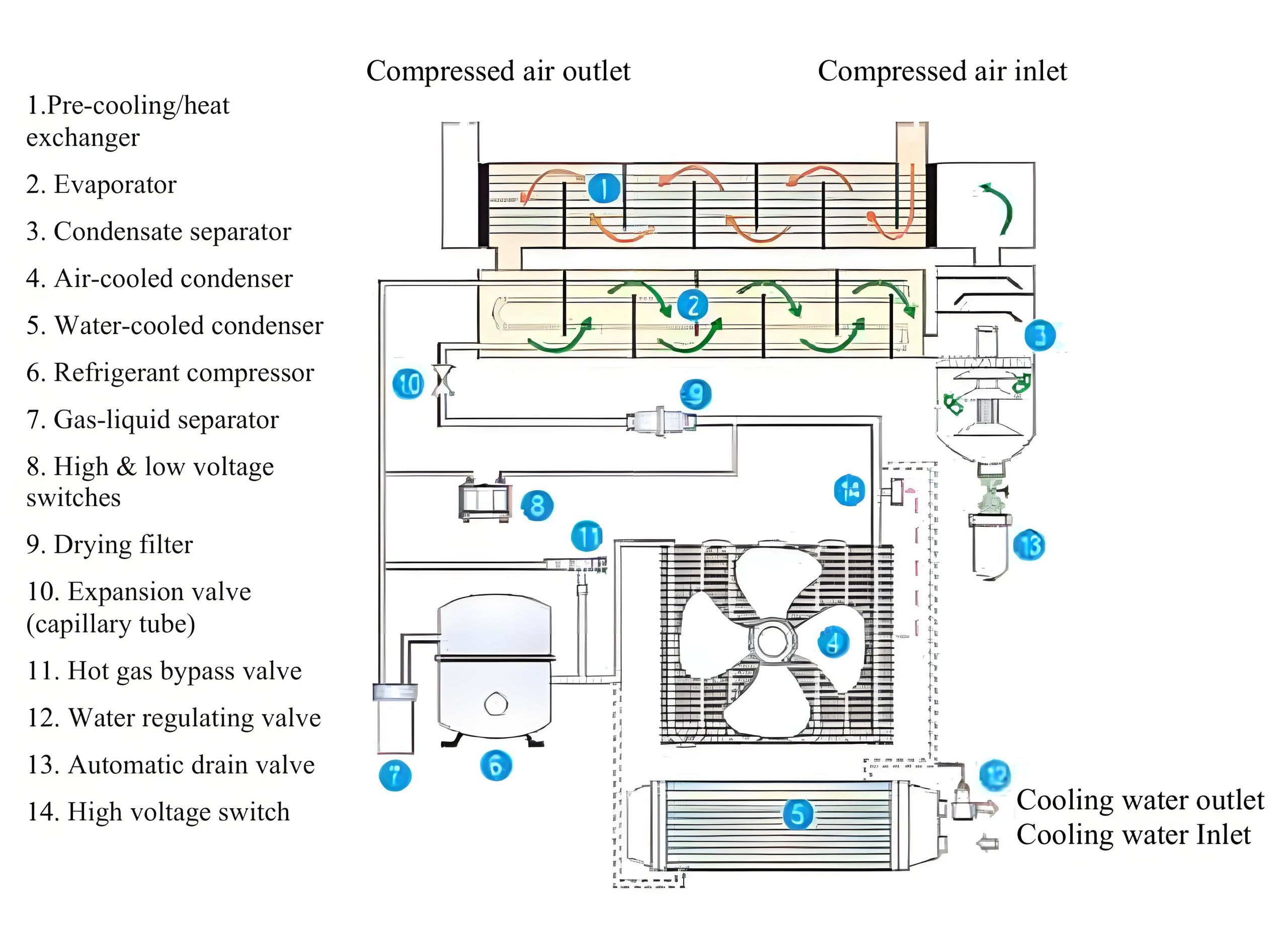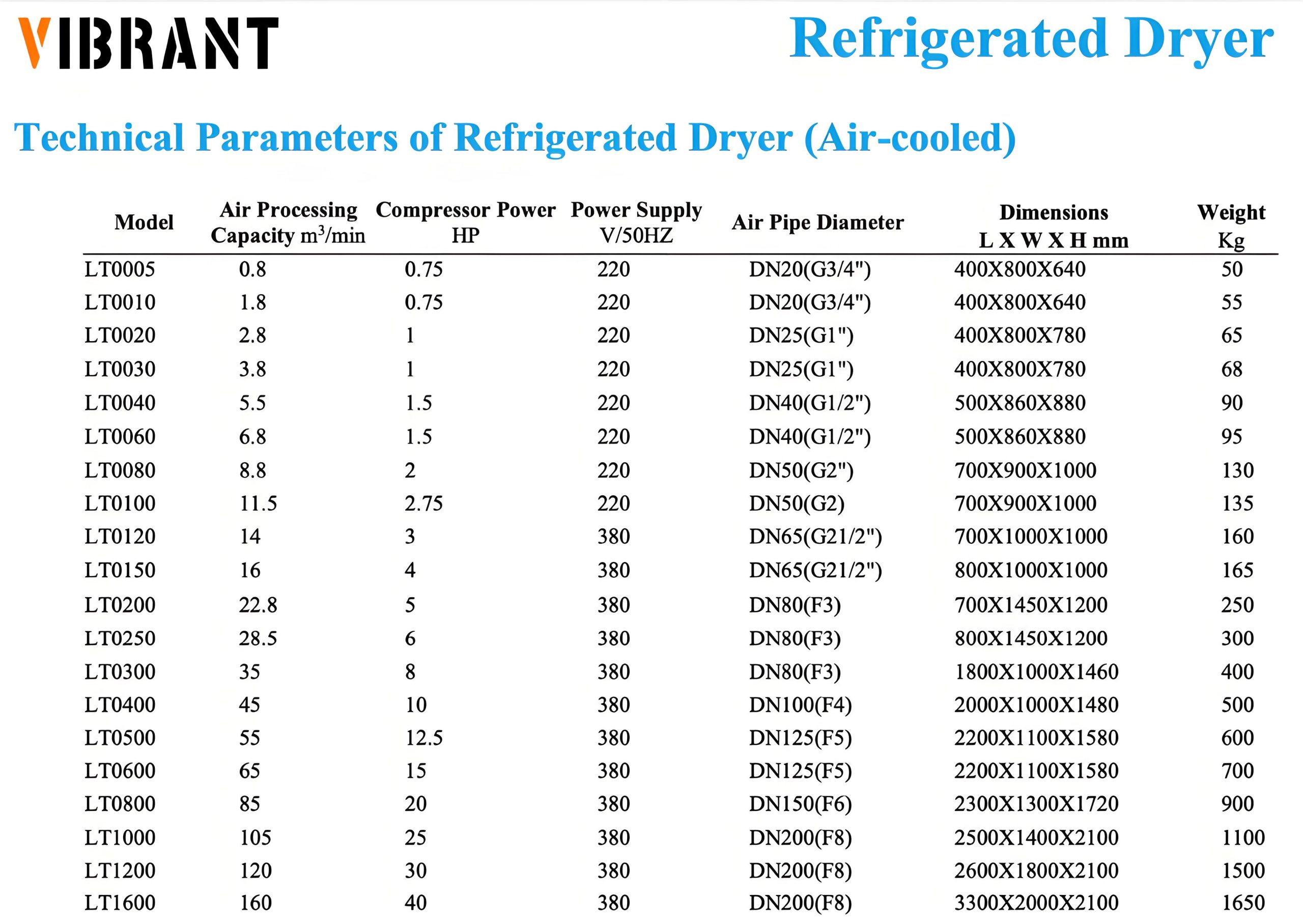Refrigerated Air Dryer
Efficient, fast, energy-saving, high-quality
Refrigerated Air Dryer
A cold dryer is a device that uses refrigeration technology to dry compressed air. It is widely used in industrial production, food processing, healthcare, environmental protection, energy, transportation, and biopharmaceuticals.
Refrigerated Air Dryer
- Air Processing Capacity(m³/min): 0.8~160
- Compressor Power(HP): 0.75~150
- Power Supply: 380V/50Hz,According to customer customization
- Dimensions(mm): 400X800X640~ 5000X2800X3000
- Weight(kg): 50~6000
- Type of cooling: Water-cooled / Air-cooled
-
Energy-efficient
-
Stable operation
-
Low noise
-
Intelligent
Get a quote now





